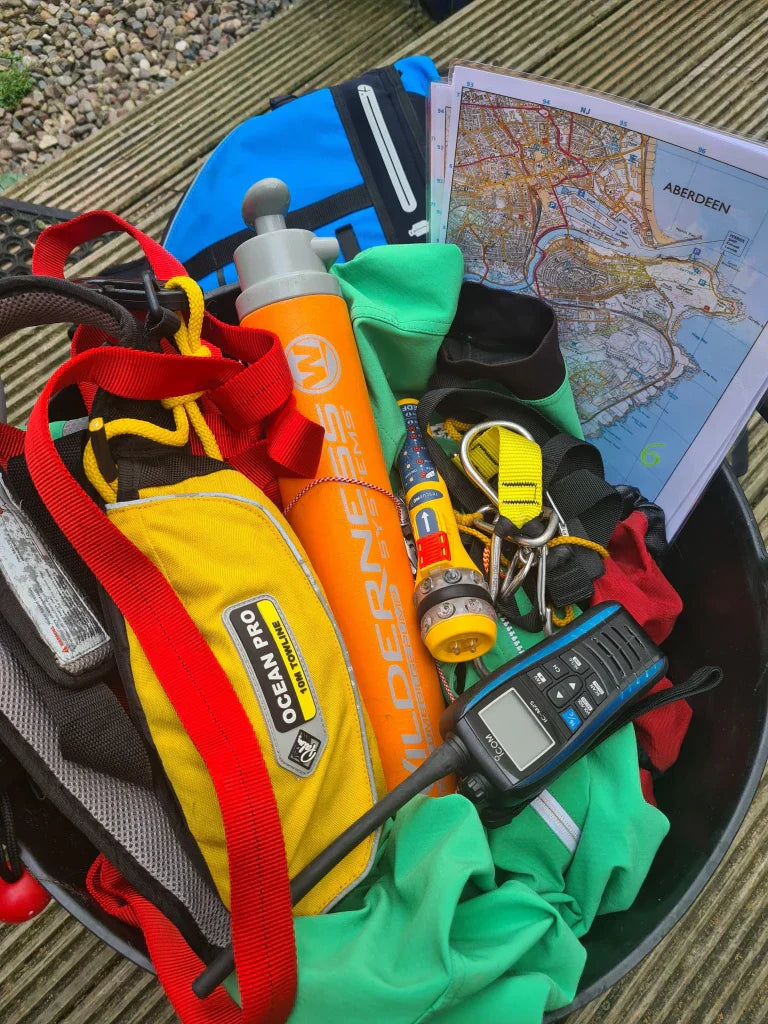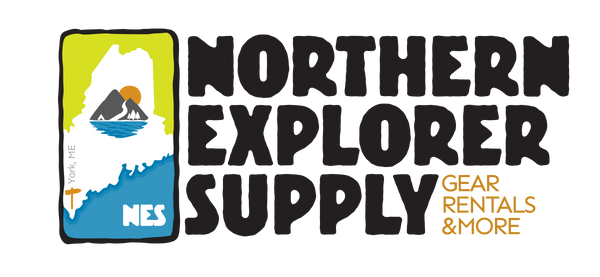
The Ultimate Paddling Gear List for Paddling within Tidal Estuaries and Offshore
Share
Northern Explorer Supply (NES) currently specializes in the rental and sales of paddleboards and sit-on-top kayaks that are designed to be used within sheltered harbors, rivers, lakes, ponds, and tributaries. While certain models we offer will perform safely offshore, NES, however, does not permit the use of its rental watercraft in unprotected waterways such as those with exposure to the open sea. We ask that our kayaks and SUPs operate only within 1,500 feet from any shoreline in the spirit of reducing risk of getting lost or overcome by rough conditions, cold water, and other factors that can lead to drowning, hypothermia, and other medical emergencies.
To improve the likelihood of your safe paddling experience (which you are solely responsible for) and, if necessary, a successful rescue by emergency services personnel, we have compiled the following equipment list for you to incorporate into your next paddling trip. The items NES provides to our rental customers are listed first.
Basic Safety Gear Provided to NES Kayak and Paddleboard Renters for Inland Waters and Sheltered Harbors:
- Coast Guard Approved Type III Personal Floatation Device (PFD), required to be worn while on the water at all times by every person, regardless of age.
- A rescue whistle attached within your PFD for easy access.
- Durable paddle (a spare paddle is recommended in case of breakage or loss).
- Dry bag attached to the deck of your vessel for waterproof protection of emergency gear and valuables.
- SUP leash (a tether to be worn on the user's ankle, attached to the stern of the paddleboard).
- Printed nautical chart of the specific and broader vicinity of the waters you are planning to paddle. View NOAA's maps.
Strongly Recommended Safety Gear for Inland Waters and Sheltered Harbors:
- Cell Phone with a waterproof dry pouch kept on your person at all times, usually within a PFD pocket or on lanyard draped around your neck.
- Local Emergency Services phone numbers saved to you and your Party's cell phones. Click for those numbers.
- Synthetic or wool thermal base-layer (worn next to skin). Never wear any cotton clothing item because it will not insulate from cold weather/water and actually exasperates the risk of hypothermia.*
- Synthetic or wool mid-layer such as a tightly woven, close fitting sweater or fleece. Neoprene is best because it absorbs and warms cool water better than other synthetic material to create a more optimal thermal barrier.*
- Synthetic paddling jacket or rain jacket, ideally with cuffs/hemlines that can be tightened around your waist, wrists, and neck to prevent water from entering quickly.
- Snug fitting non-cotton winter hat or neoprene balaclava, ideally with a chin strap.
- Emergency foil blanket.
- First Aid Kit along with any prescription medications.
- Energy bars, candy or other high calorie snacks to sustain you in case of long durations without access to meals.
- Sunscreen and sunhat for sunny days.
- Bug spray, particularly a Green Head Fly repellent like this one which also has a built in SPF protectant.
- Leatherman for cutting line or field repair of your kayak or paddle.
- Duct tape for hull, paddle, and fabric repairs.
- Flashlight for sighting obstacles at night and signaling others.
Safety Equipment for Sea Kayak Use and Extreme Situations:
- Paddle Float (note: generally when involving a sit-on-top kayak or SUP, self rescue without a paddle float and stirrup is feasible; see video for demonstration).
- A package of flares to alert of your location and/or signal rescue.
- Waterproof fire starting device or matches in case there is no access to warmth or sterilization (wounds, food, etc.).
- Kayak air bags, inserted within the non-ballasted interior of a sea kayak (a sit-on-top does not require use of this device as long as the drain plug is tightened completely shut). This prevents water from filling the interior chamber(s), which can cause the kayak to sink.
- Rescue Stirrup (recommended for sea kayaks; use in conjunction with a paddle float; see video for demonstration).
- Paddle leash (a tether for prevent your paddle from drifting away in turbulent waters).
- Tow Belt (for towing a kayak back to shore).
- Rescue horn for alerting others of your location and/or distress.
- Strobe for visually signaling others of your location.
- VHF Radio (as a backup for when cell service is unavailable) with a reliable attachment strap/mount on your PFD; keep it with you at all times.
- VHF channels (e.g., #16) and cell phone numbers of local emergency services you can contact using VHF and cell phone.
- GPS access, either through your smart phone or ideally through a satellite powered device.
- Deck compass.
- Handheld compass.
- Helmet when navigating rocky shores and outcroppings (only for extreme circumstances).
*Note: Instead of a base or mid layer, a layer of at least 3mm neoprene can be worn; a suit with full torso and leg coverage is recommended with full or partial arm coverage unless during southern Maine's summer months.
This list is not definitive or exhaustive. Please prepare specific to your comfort level, location, and variable circumstances like weather.

